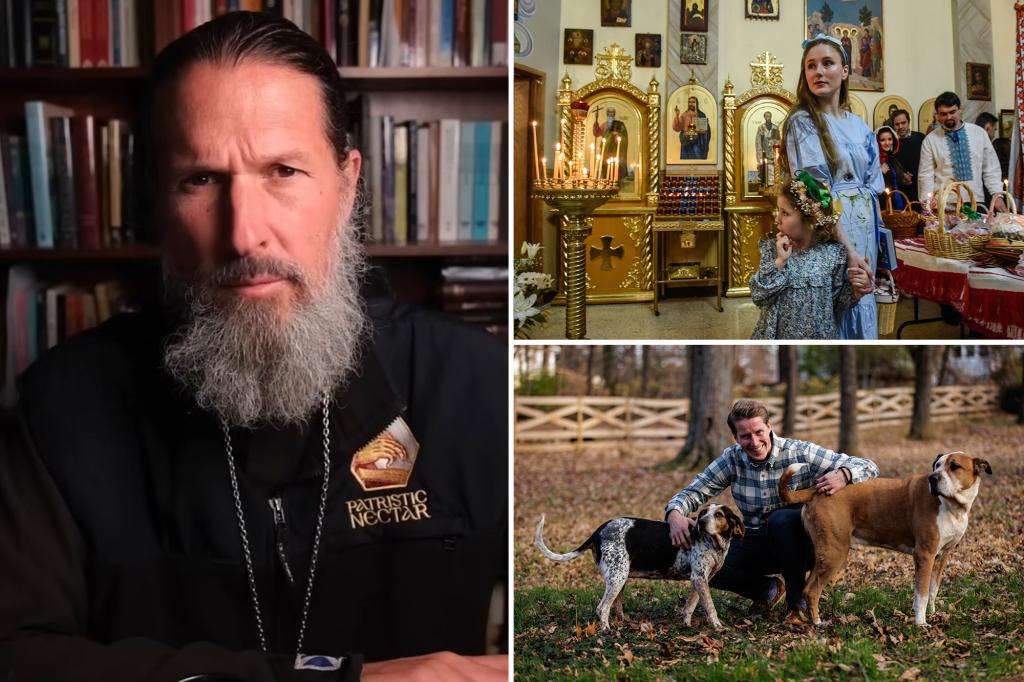Ben Christenson’s journey through faith reflects a larger trend among young Christians moving away from mainstream Protestant denominations toward more traditional faith expressions like Orthodox Christianity. Raised in an Anglican environment in Virginia, Christenson experienced firsthand the rapid changes within his church, witnessing a departure from established customs, including the shift from a traditional choir to contemporary worship bands, and evolving stances on issues such as female ordination and LGBTQ rights. These changes left him feeling that the theological foundations of his faith were not as solid as he desired, prompting him to explore other denominations during his college years. He ultimately found a sense of fulfillment in the long-standing traditions of the Orthodox Church, converting at the age of 25. This decision was driven by a longing for continuity and stability amidst a rapidly changing social landscape that often seems to diminish the weight of Christian identity.
Christenson’s experience is representative of a broader phenomenon in which traditional forms of worship are becoming more appealing to younger demographics. In 2022, Orthodox parishes reported a significant 78% increase in converts compared to pre-pandemic statistics, with a notable rise in male participation. This trend is critical, especially as many Protestant churches lean into progressive social movements, sometimes alienating those who yearn for a more consistent, historic expression of faith. Clergy members like Father Josiah Trenham have observed this trend firsthand in their congregations and emphasize the shift in interest toward more ‘masculine’ forms of worship in Orthodox settings. He attributes the decline of male attendees in many Protestant churches to what he describes as the “feminization” of worship practices over the last few decades—characterized by emotionalism and a focus on uplifting experiences—which does not resonate with many young men.
The appeal of Orthodox Christianity to this demographic is not just anecdotal; it is echoed by young converts like Elijah Wee Sit from Toronto. For him, the stark contrast between the emotionally driven atmosphere of Evangelical churches and the disciplined, tradition-bound practices of Orthodoxy was compelling. He yearns for a faith experience that challenges him and requires rigorous adherence to prayer and fasting. Similarly, others, like Zachary Porcu, who facilitates catechism classes for incoming members, note the significance of online communities fostering interest in Orthodoxy. As young men engage with digital content related to religious debates, many find themselves drawn to the stability and time-honored practices of the Orthodox faith, which invite them into a journey of self-discipline and improvement.
Interestingly, figures like Jordan Peterson, a prominent psychologist and cultural commentator, have weighed in on this resurgence of interest in Orthodoxy among young men. Peterson suggests that the structured nature of Orthodox services provides a stark contrast to the often fluid and subjective experiences of Protestant worship, offering a clear, ritualized participation that appeals to a generation searching for meaning and permanence in their spiritual lives. He likens the Orthodox experience to participating in a ballet, where every element is deliberate and significant, rather than merely an improvisation or emotional expression, as seen in many modern church services. This perspective resonates with many young men who feel lost in a society defined by rapid change and uncertainty.
The narratives of figures such as Bailey Mullins also reflect a common sentiment among new Orthodox converts who find solace in the church’s ancient traditions. Mullins, who experienced disillusionment with the political entanglements and evolving doctrines of mainline Protestant churches, discovered a longing for a faith community where he could partake in stable and historic worship, which he views as inherently masculine in its focus on God rather than individual emotional experiences. This desire for a robust and unchanging faith community, especially amid a culture perceived as increasingly chaotic, underscores the significance of Orthodox Christianity in attracting young men searching for deeper meaning.
In conclusion, the exodus of young men from progressive Protestant churches to Orthodox Christianity highlights a significant cultural shift within spiritual communities. This trend points to a desire not only for traditional worship and doctrine but also for a greater sense of stability and identity that feels grounded in history. As individual stories unfold—like those of Christenson, Wee Sit, and Mullins—they collectively illustrate a search for a faith that affirms the importance of structure, tradition, and timelessness amidst the pervasive changes of modern society. As Orthodox churches continue to welcome these new members, they represent not just a conversion of faith but a revival of ancient practices that some believe hold the key to addressing the spiritual crises of contemporary youth.

